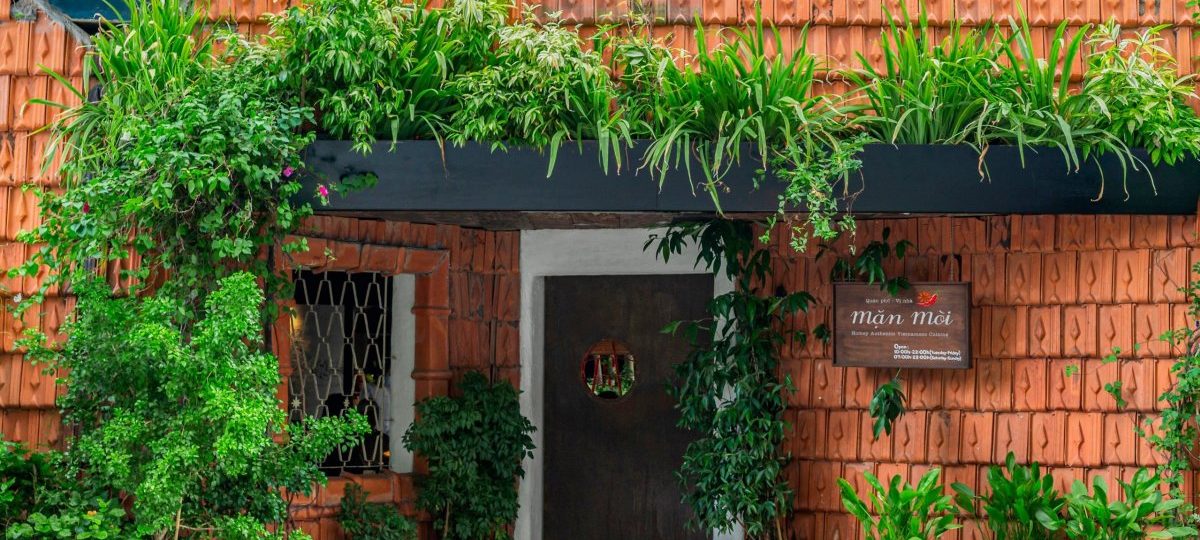Restaurant serving traditional Vietnamese food in Saigon’s expat hub praised by Michelin
The restaurant, standing out amidst the diverse international culinary scene in Saigon’s expat hub Thao Dien, has been a popular hotspot on the city’s culinary map for over a decade.
The restaurant features an open space themed around nature, adorned with rustic wooden furniture, simple crockery, and aluminum chopstick holders covered with banana leaves.
Surrounding guests are landscape paintings of the three major regions of Vietnam: north, central and south. Both the ambience and dishes evoke memories of traditional Vietnamese family meals.
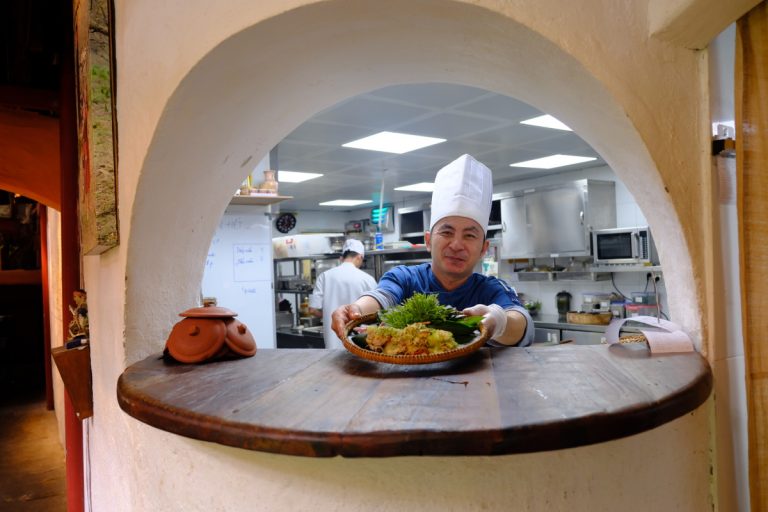
The menu features specialties from all over Vietnam, categorized into salads, soups, mains, grilled dishes, desserts, clay pot stews, and hot pots. Head chef Dong Van Dinh (pictured) ensured that everything he served underwent meticulous review and approval by Vietnamese culinary experts and artisans before being added to the menu.
In addition to serving traditional dishes, the restaurant aims to preserve lesser-known, “endangered” local delicacies, and recipes at risk of being forgotten.
It also regularly hosts cultural exchanges with Vietnamese culinary artisans, allowing guests to explore regional specialties with culinary experts, such as seafood from HCMC’s coastal district Can Gio, produce from the southern Binh Phuoc Province, or Hue in central Vietnam.
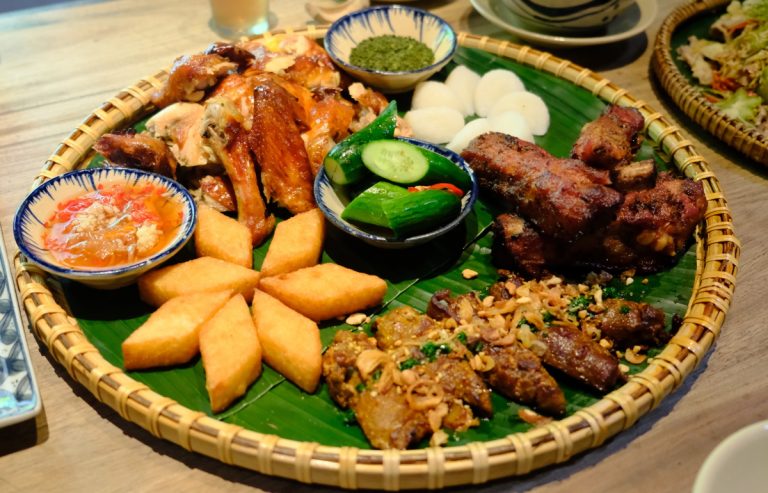
These events feature specially curated menus showcasing dishes from each respective locality.
One of the chef’s recommendations at Man Moi is the three-region grilled platter, which includes northern-style ribs, central-style chicken, and southern-style beef.
The northern highlands’ ribs use cuts with a balanced ratio of meat to fat to prevent drying during grilling.
The ribs are marinated for an hour with northern mountainous spices including forest ant salt, doi seeds (Michelia tonkinensis) which give fragrant aroma and spicy taste), and mac khen, commonly known as Indian prickly ash (Zanthoxylum rhetsa) which is a special aroma and pungent taste.
The Tam Ky chicken from the central province of Quang Nam is cooked with e leaves, commonly known as lemon basil for its fragrant lemon scent.
The chef explained that they prefer using 1.2-1.3 kg chickens, stuffed with spices and sewn shut to retain the fragrance of the leaves and prevent dryness. The leaves are also finely ground to make dipping sauce. Both chicken and beef are grilled in a clay oven.
Another highlight is the specialty Mekong Delta braised beef. Each piece of beef is seared on both sides and wrapped around a strip of fat to enhance crispiness without overwhelming the palate.

The platter is served with fried sticky rice, rice balls, lemon basil salt, sweet and sour fish sauce, and pickles.
Thanh Van, from District 4, visited the restaurant at the end of June and ordered a lunch for three that includes a three-region grilled platter, baby basket clams and fig salad, Ninh Binh pork leg salad, and pork skin soup.
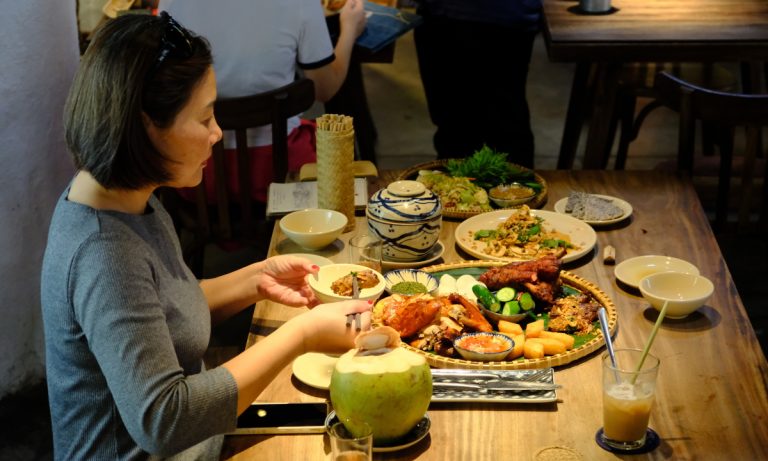
Van said she usually comes dine here with business partners “because the food has a familiar taste like home-cooked meals, it’s a spacious environment, and it’s for a good price.”
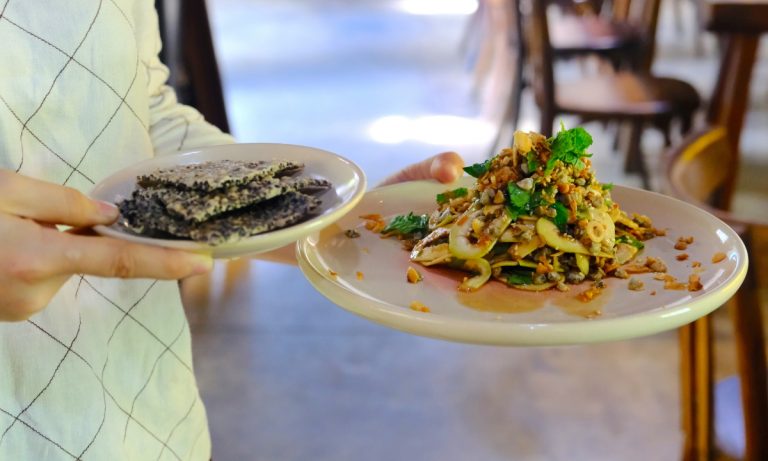
The four-course meal for three cost about VND1.5 million (US$59), she said.
The baby basket clams and fig salad is a dish from central Vietnam. The chef said the most important step in making this dish is to thoroughly clean and prepare the clams, as any remaining sand can ruin the final dish. After that, the clams are stir-fried with sawtooth herb and squeezed garlic. The cooked clams are then mixed with figs. It is essential to select young figs with a white core, as older figs tend to be tough.
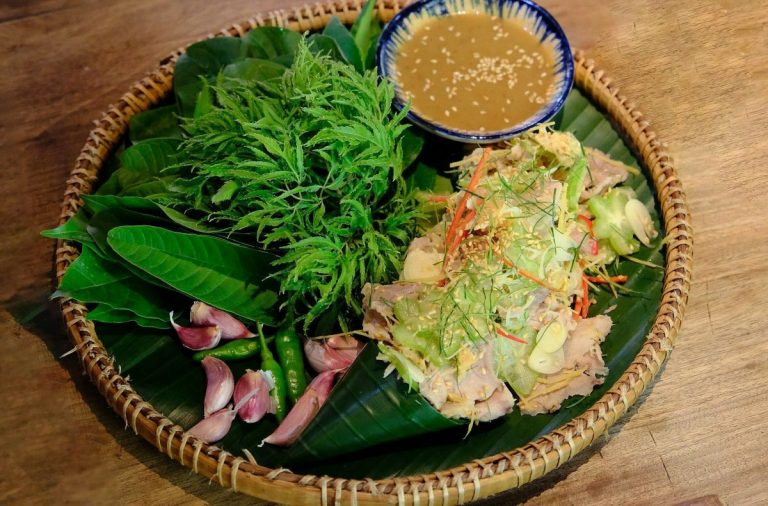
Mam nem (fermented fish sauce) and tamarind juice are added to the salad to reduce bitterness. The salad is then served with roasted sesame rice paper.
Ninh Binh pork leg salad is served with tuong ban (fermented sauce made from glutinous rice and soybeans). Pork leg is roasted until golden brown on the outside, then marinated with lemongrass, purple onion and fish sauce before being steamed. This cooking method keeps the meat soft and moist.
Once cooked, the meat is then sliced thin and rolled together with starfruit, lime leaves, lemongrass, galangal, and then flavored with sesame seeds and lime leaves. This dish has a predominantly sour taste, so if the starfruit is not sour enough, the chef can add extra lemon juice. Perilla leaves and basil are also rolled with the meat. Then diners dunk the roll deeply in the sauce for the best experience.
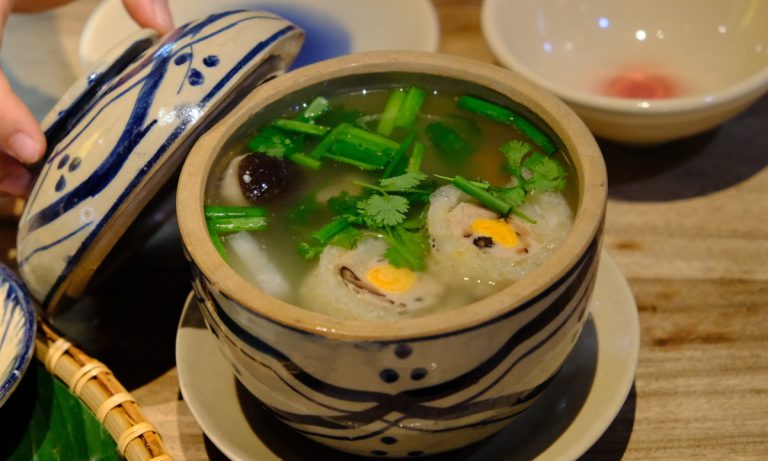
Pork skin soup (pictured) is a popular dish in northern Vietnamese family meals. Chef Dinh mentioned that the traditional version of the soup is simpler than he makes it, consisting solely of pork rind boiled with bone broth. But the dish also varies in each region.
At the restaurant, the pork rind is prepared by wrapping it with wood ear mushrooms, raw sausage, and quail eggs, which creates eye-catching layers.
According to the chef, the essence of this dish lies in its broth, which is clear and savory, without using artificial sweeteners. The natural sweetness comes entirely from pork bones and vegetable spices.
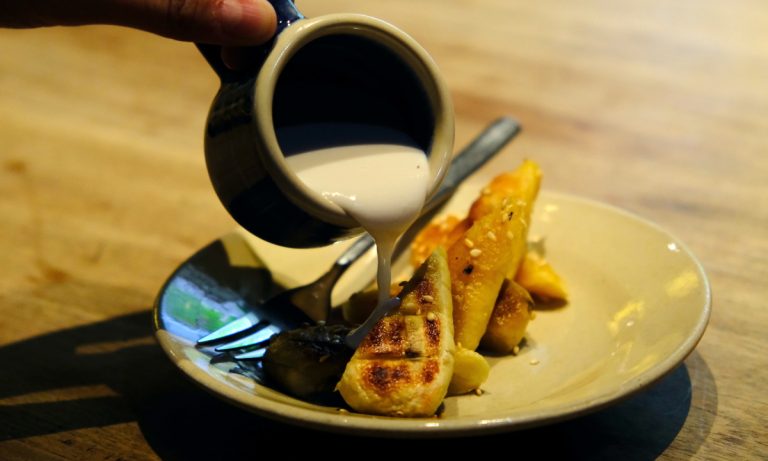
In addition to savory dishes, the restaurant offers a dessert menu.
Many diners opt for the grilled banana with coconut cream originating from the Mekong Delta. The coconut cream is served separately, allowing diners to adjust the amount according to their taste preferences. This dish is served just after the bananas are freshly grilled over hot charcoal.
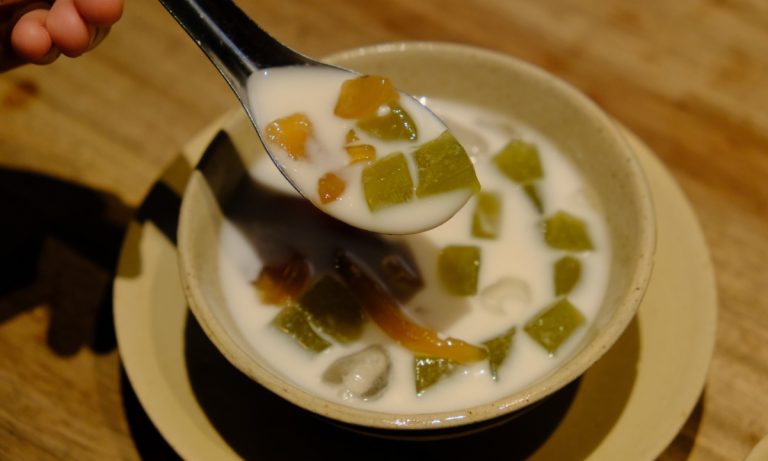
Another Mekong Delta snack item on the dessert menu is jelly with coconut milk. This dish is made by sweetening the jelly, which is made from the juice of tiliacora triandra leaves, and doub palm, then served with a ladle of coconut milk.
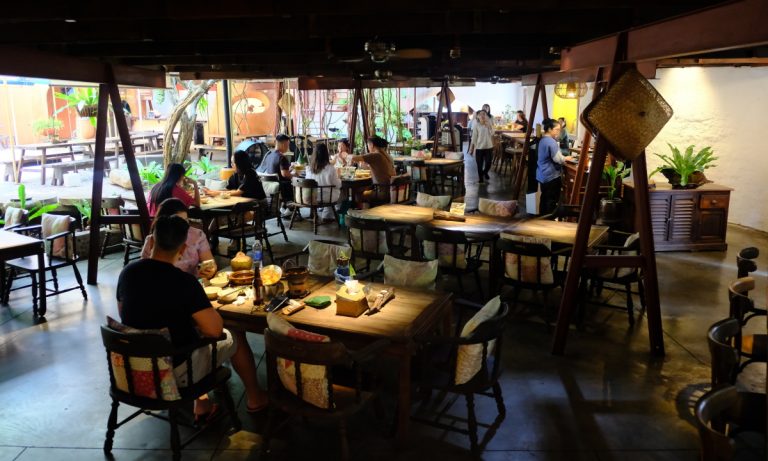
Man Moi restaurant can accommodate over 100 guests. According to restaurant representatives, receiving the Bib Gourmand award from Michelin is an opportunity to introduce a variety of Vietnamese regional cuisines to international diners, showcasing the richness of Vietnamese cuisine beyond pho and banh mi.
Source: VNexpress



